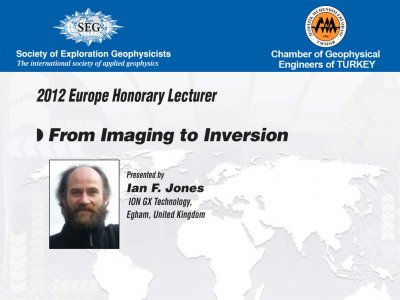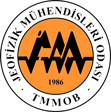
KONFERANS 24 ŞUBAT 2012 FROM IMAGING TO INVERSION
SEG ve TMMOB Jeofizik Mühendisleri Odası‘nın işbirliği çerçevesinde, Odamızın daveti üzerine SEG‘nin 2012 fahri konuşmacılarından Ian F. Jones "From Imaging to Inversion" konulu bir konferans verecektir.
Tarih : 24 Şubat 2012, Cuma
Yer : TPAO Araştırma Merkezi Konferans Salonu, Ankara
Saat : 14.30
"Oda‘mızın daveti üzerine SEG‘nin 2011 fahri konuşmacılarından Lucy MacGregor 2 Mart 2011 tarihinde "Integrating Well Log, Seismic, and CSEM Data for Reservoir Characterization" konulu bir konferans vermişti."
Abstract
Hydrocarbon exploration has many phases: from the heavy engineering aspects of the rig building and drilling industries, to the geological interpretation and attribute analysis of oil company geologists and rock physicists. However, underpinning all this activity is geophysical signal processing, which produces, as a final product, a 3D image of the subsurface of the Earth and related attribute volumes. This image is then used by rock physicists and engineers to infer what fluids are present in the rock formations, and by geologists to decide where to drill exploration wells.
Since the late 1970s, geophysicists have constructed images of the Earth‘s subsurface by estimating the speed of sound in the different rock layers, and using this information to reposition seismic data recorded on the Earth‘s surface, back to the subsurface reflecting surfaces to form a seismic image. This latter process is called migration.
In writing a migration algorithm, it is possible to make many simplifying approximations, so that forming an image becomes a tractable problem for the available computer power. However, to form the image, the migration algorithm needs a good estimate of the velocity of sound in the various subsurface rock layers, and there are many techniques for estimating these velocities.
In this talk, I‘ll review these aspects of contemporary imaging, and introduce some emerging ideas which perhaps seem to promise circumvention of the current two-step imaging procedure of velocity model building followed by migration, so as to estimate subsurface reflectivity, velocity, density and absorption parameter fields directly from the recorded data. This emerging technology is known as full waveform inversion.

